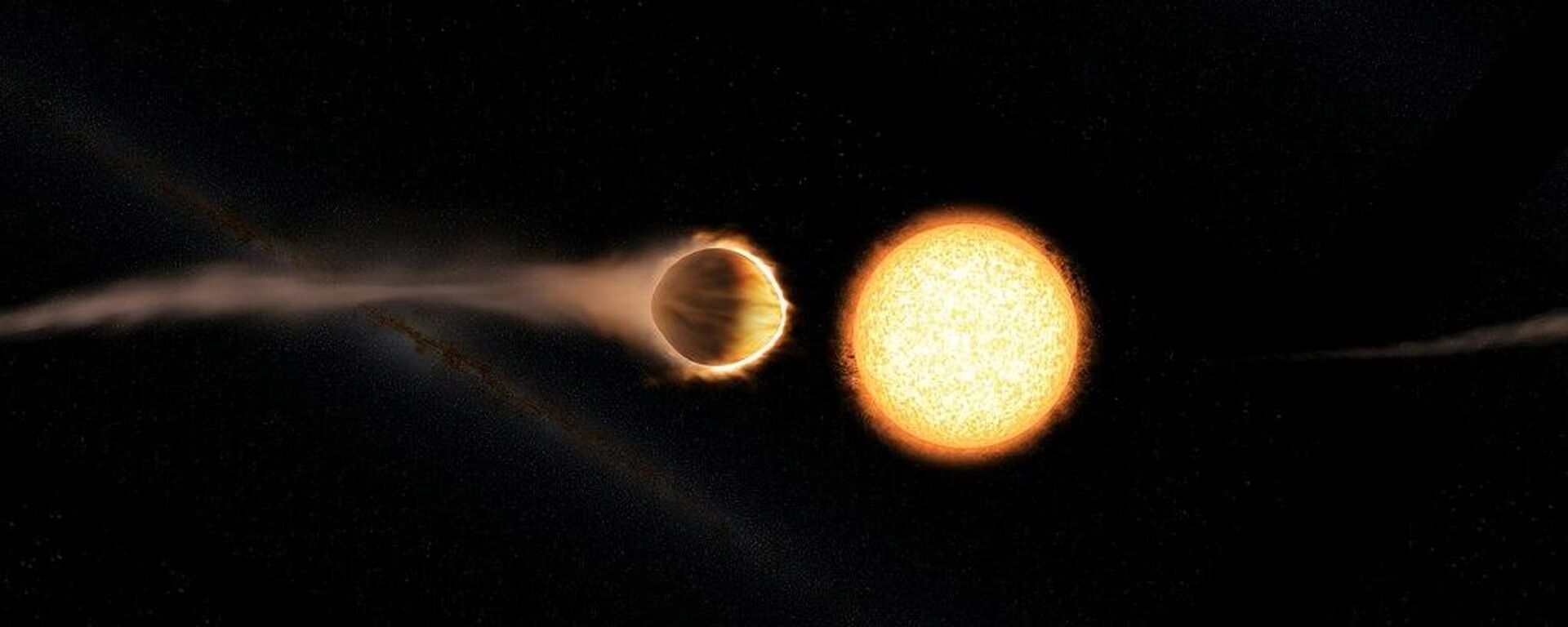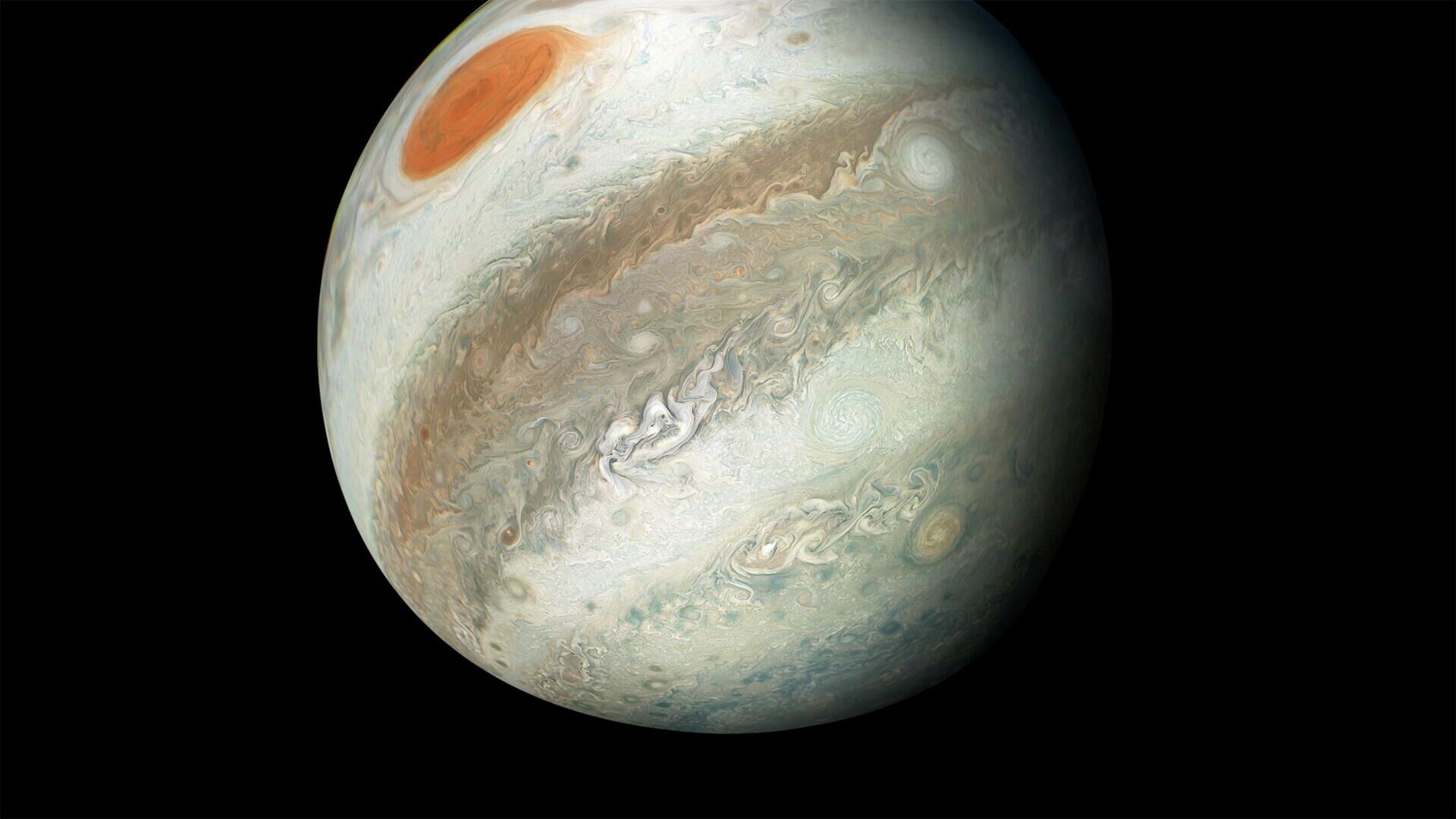https://sputnikglobe.com/20220623/nom-nom-nom-jupiter-got-so-big-by-gobbling-up-baby-planets-astronomers-say-1096607426.html
Nom, Nom, Nom: Jupiter Got So Big by Gobbling Up Baby Planets, Astronomers Say
Nom, Nom, Nom: Jupiter Got So Big by Gobbling Up Baby Planets, Astronomers Say
Sputnik International
In Greco-Latin mythology, it was the Titan Saturn who devoured his children following a prophecy that he would be overthrown by one of them. However, when it... 23.06.2022, Sputnik International
2022-06-23T22:11+0000
2022-06-23T22:11+0000
2022-06-23T22:09+0000
jupiter
study
planets
solar system
https://cdn1.img.sputnikglobe.com/img/07e5/0a/1c/1090292284_0:0:1920:1080_1920x0_80_0_0_7db01d9ac8ebd15a810f3e015ea6df2a.jpg
The theory was articulated in a new article published recently in Astronomy & Astrophysics and is based on findings about the gas giant’s makeup made by the Juno probe.According to the scientists, there are a few theories about how Jupiter formed from the nebula that gave birth to our Sun and the entire solar system. Both major theories agree that the planet consumed huge amounts of hydrogen and helium from the nebula, but disagree about whether the solid matter it attracted was primarily tiny pebbles or larger rocky planetesimals that were on their way to agglomerating into planets.If it was pebbles, they said, there would be almost no proof of that from the surface of the planet, but if it were larger planetesimals, then a “non-homogenous distribution of heavy elements” would remain apparent in the area of the planet where they impacted.Using data from the older Galileo spacecraft and new gravitational measurements from the Juno spacecraft that arrived in Jupiter’s orbit in 2016, the scientists went looking for those telltale signs beneath Jupiter’s surface layers - and found them.The second-largest object in the solar system after the Sun, Jupiter exerts such a powerful gravitational pull that its barycenter with the Sun is above the star’s surface, has attracted at least 80 moons, and may be responsible for perturbing the orbits of several other solar system objects.It continues to pull in objects, too, like the Shoemaker-Levy 9 comet that was captured and torn apart by Jupiter’s gravity before colliding with it in 1994. The impact of the comet’s 21 fragments left highly visible scarring on the planet’s southern bands for several months afterward.
https://sputnikglobe.com/20220222/jupiter-like-planet-outside-solar-system-has-metal-clouds-which-could-rain-precious-liquid-gems-1093258383.html
Sputnik International
feedback@sputniknews.com
+74956456601
MIA „Rossiya Segodnya“
2022
Sputnik International
feedback@sputniknews.com
+74956456601
MIA „Rossiya Segodnya“
News
en_EN
Sputnik International
feedback@sputniknews.com
+74956456601
MIA „Rossiya Segodnya“
Sputnik International
feedback@sputniknews.com
+74956456601
MIA „Rossiya Segodnya“
jupiter, study, planets, solar system
jupiter, study, planets, solar system
Nom, Nom, Nom: Jupiter Got So Big by Gobbling Up Baby Planets, Astronomers Say
In Greco-Latin mythology, it was the Titan Saturn who devoured his children following a prophecy that he would be overthrown by one of them. However, when it comes to the solar system, it seems Jupiter may be the one with an appetite for its own kin, according to a new research paper.
The theory was articulated in a new article published recently in
Astronomy & Astrophysics and is based on findings about the gas giant’s makeup made by the Juno probe.
According to the scientists, there are a few theories about how Jupiter formed from the nebula that gave birth to our Sun and the entire solar system. Both major theories agree that the planet consumed huge amounts of
hydrogen and helium from the nebula, but disagree about whether the solid matter it attracted was primarily tiny pebbles or larger rocky planetesimals that were on their way to agglomerating into planets.
If it was pebbles, they said, there would be almost no proof of that from the surface of the planet, but if it were larger planetesimals, then a “non-homogenous distribution of heavy elements” would remain apparent in the area of the planet where they impacted.

22 February 2022, 09:34 GMT
Using data from the older Galileo spacecraft and new gravitational measurements from the
Juno spacecraft that arrived in Jupiter’s orbit in 2016, the scientists went looking for those telltale signs beneath Jupiter’s surface layers -
and found them.
“Our results imply that Jupiter continued to accrete heavy elements in large amounts while its hydrogen-helium envelope was growing, contrary to predictions based on the pebble-isolation mass in its simplest incarnation, favoring instead planetesimal-based or more complex hybrid model,” the study’s conclusion notes.
The second-largest object in the solar system after the Sun, Jupiter exerts such a powerful gravitational pull that its barycenter with the Sun is above the star’s surface, has attracted at least 80 moons, and may be responsible for
perturbing the orbits of several other solar system objects.
It continues to pull in objects, too, like the Shoemaker-Levy 9 comet that was captured and torn apart by Jupiter’s gravity before
colliding with it in 1994. The impact of the comet’s 21 fragments left highly visible scarring on the planet’s southern bands for several months afterward.


